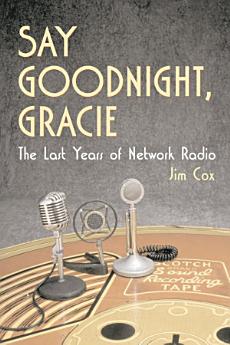Say Goodnight, Gracie: The Last Years of Network Radio
About this ebook
This work examines what could be called the final decade of AM network radio and the many factors that contributed to its decline. The first chapter is an overview of AM radio in the 1950s. The second chapter covers 1950 through 1953, when radio was still a popular medium but faced a need to make changes in its programming. Bill Paley and David Sarnoff strongly promoted radio in those years and the networks attempted to increase the ratings of their programs. Chapter three covers 1954 through 1956, three years in which radio experienced losses of its primary audience and some of its most popular shows (because of the pullout of advertisers), and an effort was made by the networks to keep their programs going and to convince audiences the medium was not on its way out. Chapter four, 1957 through 1960, chronicles the "end" of AM radio in homes, the cancellation of almost all remaining programs, network affiliates' going independent, and the rise in popularity of "drive time" radio. Chapter five covers 1961 to the present and summarizes the major changes that have taken place.







